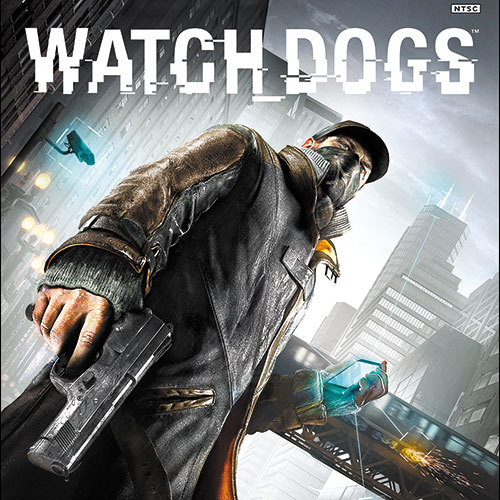A solid debut for a promising new series

By Jeff Marchiafava | Game Informer Magazine (MCT)
“Watch Dogs”
Platform: PlayStation 4, Xbox One, PC, PlayStation 3, Xbox 360
Style: 1-player action (8-player online)
Publisher: Ubisoft
Developer: Ubisoft Montreal
Rating: M, for Mature
Ubisoft introduced players to “Watch Dogs” with an exciting gameplay demo that stole the show at E3 in 2012. Since then, a six-month delay and rumors of a visual downgrade have caused fans’ faith in the promising new IP to waver. The final game lies somewhere between the early next-gen hysteria and subsequent skepticism; like most antiheroes, “Watch Dogs” gives players what they need, but not necessarily everything they want.
“Watch Dogs” follows the exploits of Aiden Pearce, a tech-savvy hacker hell-bent on discovering who was responsible for the death of his niece and making them pay. The story offers up a number of conspiratorial twists as Pearce discovers the far-reaching powers of the Blume Corporation. The company’s CtOS is the interconnected operating system that Chicago runs on, and through his own hacking prowess, allows Pearce to run Chicago.
The first thing players will notice about “Watch Dogs” is its visuals, which are indeed less impressive than the (literally) explosive announcement demo. Ubisoft only provided PS4 and Xbox One versions of the game for our review, but the graphics betray “Watch Dogs’” cross-gen status, and players should adjust their expectations accordingly. Sometimes the game looks great; other times, bland textures, sparse crowds and the occasional pop-in of cars and objects when traveling at speed fail to meet the new standard “Grand Theft Auto V” set on last-gen hardware. The more important plus side is that “Watch Dogs” provides a massive open world filled with plenty of interaction and few load times aside from the initial startup.
Like many open-world games, the activities in “Watch Dogs” split your time evenly between being on foot and in a car (or motorcycle or boat). The driving controls are looser than I’d like, and are more reminiscent of early 3-D “GTA” games than the turn-on-a-dime handling many modern games offer. Most objects have a distinct feeling of weightlessness in the world; fences crumple like tissue paper, light posts snap off and shatter on the ground, and cars spin out of your way with minimal contact. Smashing through bus shelters and sidewalk cafes without losing speed creates some Hollywood-worthy action moments, but they come at a cost; ramming a pursuing enemy vehicle into oncoming traffic only to have them blow through cars and be back on your tail a second later is frustrating — especially considering you can’t use weapons when driving.
Instead, technology is your weapon (spoiler!), and you unlock a variety of hacks to eliminate your foes. Activating guard posts, overloading steam pipes and tripping traffic lights can take down vehicles with a single hit, and the game signals when it’s best to activate them. They work well, but are fundamentally limited — you have to find them in the environment in order to use them. This leads to a lot of circling around blocks and alleyways hoping to come across a hackable item you’ve already unlocked to use on foes. Rather than eliminating all of your pursuers via environmental takedowns, driving in “Watch Dogs” is really about evasion — losing your tails just long enough to pull into a secluded side street or parking lot and hide in your car (via an actual hiding mechanic) until the heat dies down. Once I realized that, the cat-and-mouse driving segments became more fun.
On the other hand, the on-foot action is entertaining from the get-go and only becomes more engaging as you unlock new abilities. Hacking items adds a meaningful dimension to combat, allowing you to effortlessly hop between camera feeds to get the layout of the environment, tag foes, and activate traps. The solid shooting mechanics make full-scale firefights enjoyable, but “Watch Dogs’” combat really shines with a stealth-minded approach. A focus power lets you temporarily slow down time to line up headshots and take down enemies before they alert their buddies; using the environment to my advantage and picking off enemies one by one while remaining undetected never got old for me.
Unfortunately, “Watch Dogs’” story doesn’t live up to the gameplay, in large part due to Ubisoft Montreal’s inability to pick a tone and stick with it. Some characters, like Lucky Quinn and Jordi Chin, are (relatively) understated and interesting. Others, like Anthony “Iraq” Wade and Clara, are so overdesigned that it’s hard to take them seriously. Aiden Pearce is a mix of the two approaches; a lone-wolf vigilante with a comically gruff Batman voice who can’t let go of his guilt for the death of a family member. Ultimately, Pearce is Max Payne without an affinity for cheesy poetry, and while he offers up a few compelling moments during the story, he’s usually just a mope who can’t stop staring at his cellphone.
At the end of the day, “Watch Dogs’” story works as a basic revenge tale, and the final few missions provide some gravity to the characters. Ultimately, however, the main draw of any open-world game is the gameplay, and while not perfect, “Watch Dogs’” hacking abilities add an engaging and unique twist to the third-person action. Ubisoft has another deserved hit on its hands, and I look forward to seeing where the new series goes next.











